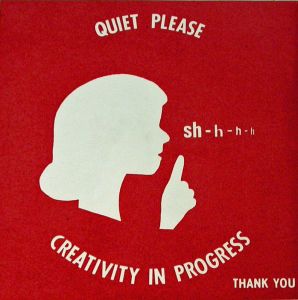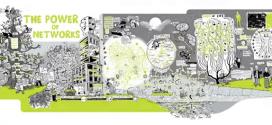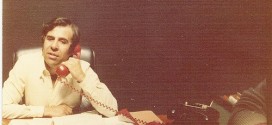 ‘Innovation’ and ‘culture’ as individual concepts are sufficiently difficult to achieve that they warrant stacks of books on the subject from lots of well informed professionals. Put the two words together as an objective to be achieved, and the CEOs of even the most sophisticated global companies will pale slightly.
‘Innovation’ and ‘culture’ as individual concepts are sufficiently difficult to achieve that they warrant stacks of books on the subject from lots of well informed professionals. Put the two words together as an objective to be achieved, and the CEOs of even the most sophisticated global companies will pale slightly.
The problem is that to create an innovation culture within any business – pre-existing or start-up – requires the CEO, entrepreneur or founder to try and ‘manage’ two deeply human and inherently unmanageable areas.
Corporate culture is defined by Entrepreneur magazine as ‘A blend of the values, beliefs, taboos, symbols, rituals and myths all companies develop over time’ – this definition is clear that culture is bound up in the interactions of people, and that its importance is significant as ‘corporate culture describes and governs the ways a company’s owners and employees think, feel and act’
Innovation is defined by Wikipedia as ‘the development of new value through solutions that meet new requirements, inarticulate needs, or old customer and market needs in value adding new ways. This is accomplished through more effective products, processes, services, technologies, or ideas’. Entrepreneur magazine calls an innovator ‘someone who pushes the boundaries of the known world – a change agent who is relentless in making things happen and bringing ideas to execution.’
To create an innovation culture requires the leader to establish the conditions in which the values and practices of the company relentlessly creates new value which did not exist previously.
If a culture of innovation is not created, a business will fail to identify and execute to capture new value which, in a competitive environment, will lead to the long term demise of the company.
The answer to how a CEO, entrepreneur or founder creates an innovation culture is unlocked by applying an understanding of how humans think and then act.
Understand the power of habits
Charles Duhigg writes in the excellent The Power of Habit that ‘habits, as much as memory and reason, are at the root of how we behave’.
So if you can change habits, you can change behaviours.
Duhigg talks about how a corporate keystone habit is ‘a pattern that has the power to start a chain reaction, changing other habits as it moves through an organization. Keystone habits …. can influence how people work, eat, play, live, spend, and communicate.’
Analyse how a keystone habit is created
Habits are not big strategic initiatives pushed from the top. They are the acquired or learned patterns of behaviour which are repeated so often they virtually become automatic. This happens at an individual level and spreads to others when the right environment exists.
Rather than starting with big new product brainstorming sessions or innovation teams, experiment with the lowest common denominator of habit change you can identify. Duhigg describes how MIT researchers discovered ‘a simple neurological loop at the core of every habit, a loop that consists of three parts: a cue, a routine and a reward’
The ‘cue’ is a trigger that causes the people in your organisation to act automatically. The automatic action is the ‘routine’. Your people act automatically because they know what the ‘reward’ is for their action and their brains know it’s worth remembering. This routine has been conditioned because humans are habit engines, and even more so in a social context. The social context of your existing work culture gives new people all the cues, routines and rewards they need to soon start to conform to your existing corporate habits.
Create the keystone habit of innovation
To create the keystone habit of innovation using this approach you need to apply the three part loop of cue, routine and reward to certain key behaviours. These are behaviours that you hypothesise will drive a culture of innovation across your company. You can then test that these new habits create these behaviours and iterate depending on how successful the results are.
As an example, you could start simply with the Wikipedia innovation definition, ‘the development of new value through solutions that meet new requirements, inarticulate needs, or old customer and market needs in value adding new ways. This is accomplished through more effective products, processes, services, technologies, or ideas’.
Take the words highlighted as a potential keystone habit: ‘Meet needs in value adding new ways‘. Now think about relevant cues, routines and rewards. You now know generally what new routines you want: you want your people to always consider whether internal and external needs can be met in value adding new ways.
The rewards just need to be sufficient for the brain to signal them as being worth remembering. They can be explicit on a scored or emotional basis; communicated praise in internal comms. or scoring (eg. New Value Add league tables) can work to kick-start change. Far better in the long-term is the creation of implicit rewards – pride in a job well done. If you’ve created a mission above profit around innovation because of how important it is to your business, then the reward element of a correctly aligned innovation keystone habit is progress in your organisation. It becomes the case that as an employee of X Corp, if you’re not taking every opportunity to meet needs in value adding new ways, then you shouldn’t be an employee of X Corp.
You then need to create a series of cues to trigger the automatic routine of looking to meet needs in value adding new ways. Venture capitalist Ben Horowitz refers to the useful mechanic of ‘cultural design points’:
‘you need to think about how you can be provocative enough to change what people do every day. Ideally, a cultural design point will be trivial to implement, but will have far reaching behavioral consequences.’
He gives examples such as Amazon’s Jeff Bezos helping cue the keystone habit of delivering value to customers rather than extracting it from them by insisting Amazon office desks are made from cheap doors with legs nailed on.
The series of cues you decide to engineer can range from those with higher shock value – X Corp communicates all hires and promotions ONLY in terms of pivotal examples of how individuals have been instrumental in meeting needs in value adding new ways – to changes in processes which embed cues. X Corp could insist that all business cases include a ‘shadow radical’ business case which clearly shows executives have explored the most extreme way of meeting needs in value adding new ways. This acts to give an outlet to all forms of alternative thinking that otherwise will be killed in the forming and norming of a business case built for sign off.
If you’re not already a subscriber, sign up below to receive latest thinking around innovation and creativity:
 Constant Mentor Goal Setting & Interventions for Leaders
Constant Mentor Goal Setting & Interventions for Leaders




